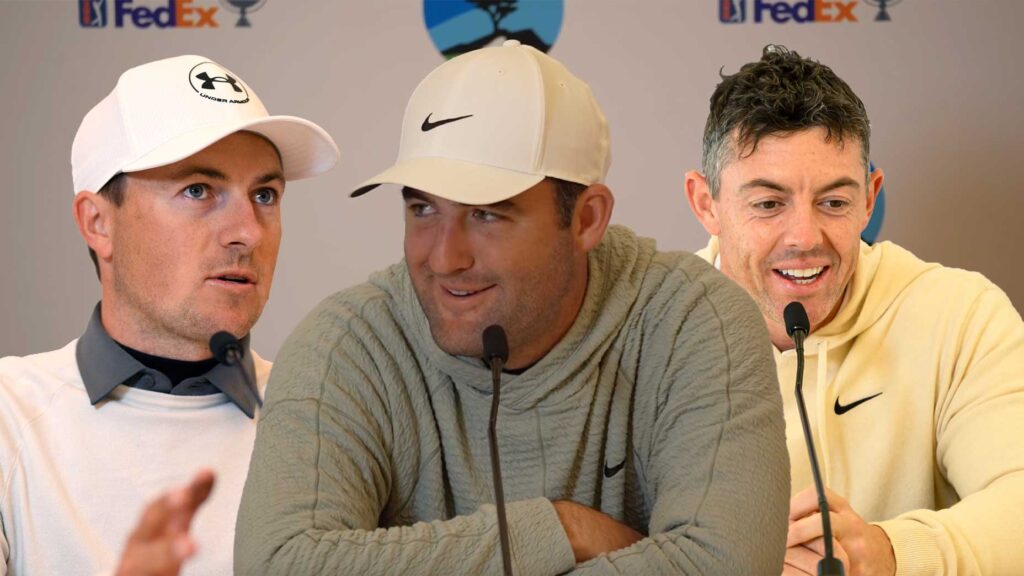The PGA Tour season kicked off with press conferences from Jordan Spieth, Scottie Scheffler, and Rory McIlroy. Each player shared candid insights into their experiences, goals, and challenges.
Scottie Scheffler’s press conference stood out for its transparency and detail, with the player sharing personal anecdotes and reflections on his career. This newfound openness could be attributed to the Tour’s new offseason and the players’ need for a break from constant media appearances.
Rory McIlroy also emphasized the importance of breaks in athletes’ schedules, referencing how other sports leagues have structured their seasons to allow for downtime. The concept of scarcity in player appearances can enhance fans’ anticipation and interest in their favorite athletes.
Spieth, Scheffler, and McIlroy are among the players voicing concerns about the Tour’s packed schedule, with McIlroy opting for fewer events in 2025 to prioritize time with his family. The players’ experiences with media fatigue highlight the need for balance in managing their public appearances.
Scheffler’s media presence in previous seasons was characterized by repetitive interactions and a reluctance to reveal personal insights. However, his recent press conference showcased a more relaxed and engaging approach, hinting at the benefits of taking a break from constant media scrutiny.
Players like Scheffler, Spieth, and McIlroy are navigating the demands of professional golf while balancing personal obligations and health issues. The new simulator league, TGL, offers lucrative contracts but poses challenges for players with families and injury concerns.
McIlroy’s comments on the PGA Tour calendar suggest a need for a more strategic approach to scheduling events, allowing players to recharge and maintain peak performance. The recent press conferences from top players signal a shift towards more candid and engaging interactions with the media.
The impact of breaks and scarcity in player appearances can enhance fans’ connection to their favorite athletes and create anticipation for their return to competition. The evolution of player-media interactions reflects a broader shift towards transparency and authenticity in the world of professional golf.


